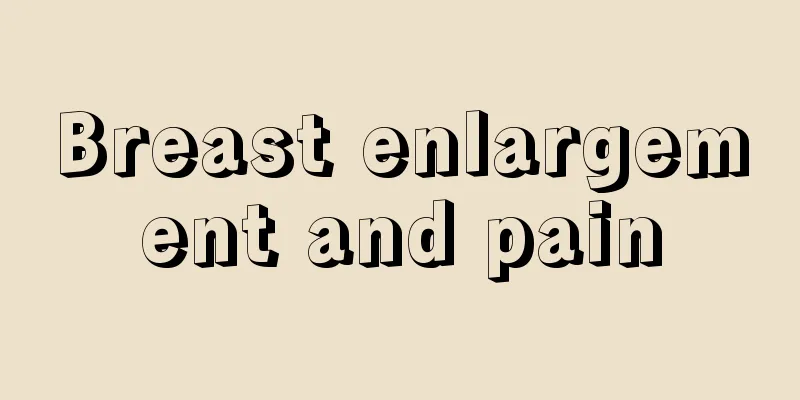[Oral Health Science Series 5] Make the plaque in the gaps between teeth disappear
![[Oral Health Science Series 5] Make the plaque in the gaps between teeth disappear](/upload/images/67f1dc2766373.webp)
|
Brushing teeth is a routine self-oral care measure for each of us in our daily life. But there is a phenomenon that often makes us feel strange: we often bleed when brushing our teeth. When we go to the hospital for a checkup, the doctor tells us that it is caused by improper brushing and we need to have our teeth cleaned. We obviously brush our teeth every day, so why are our teeth still dirty and need to be cleaned? In fact, each of our teeth has five surfaces: labial (cheek) side, occlusal surface, lingual (palatal) side, mesial proximal surface and distal proximal surface. Brushing teeth can usually only clean the plaque and soft plaque on the first three tooth surfaces, while it is difficult to completely remove the plaque in the interdental space (the two adjacent surfaces between two teeth) no matter which brushing method or toothbrush is used. This is also a "cleaning dead corner" that is often overlooked. Plaque in the gaps between teeth is the most common cause of bleeding during brushing. In order to eliminate plaque and soft scale in the gaps between teeth, in addition to brushing correctly, we also need some auxiliary tools to help. Only by combining effective brushing with auxiliary tools can we truly eliminate plaque in the gaps between teeth! So what are the auxiliary tools we have? How to choose these auxiliary tools correctly? Let's quickly get to know them! The first auxiliary tool - dental floss Dental floss is suitable for people with closely adjacent teeth and small gaps between teeth. There are two types of dental floss: one is dental floss and the other is dental floss stick. It is not just a simple piece of wire. It can not only remove the food stuck in our mouth, but also clean the plaque and soft scale on the adjacent surface. Standard dental floss is more flexible and matches the size of normal gaps between teeth. Correct use of dental floss will not make the gaps between teeth larger. Here is the correct way to use dental floss: The second auxiliary tool - interdental brush Interdental brushes, also called interdental brushes, are only suitable for people with larger interdental spaces. There are many types of interdental brushes, which can be reasonably selected according to the actual size of the interdental space. The brush head can be twisted, bent and adjusted at will, which is very convenient to use. In addition, its bristles can penetrate into the triangle area, gingival sulcus and part of the periodontal pocket exposed after the atrophy of the gingival papilla, so as to better clean the interdental space. Here is the correct way to use the interdental brush: The third auxiliary tool - dental flosser Oral irrigators, also known as water flossers, are suitable for people who have large gaps between teeth due to periodontitis, are prone to food stuck in their teeth, or are undergoing orthodontic treatment. The high-pressure water jets it sprays can wash away loose dental plaque on the surface of the teeth, and can even reach the gaps between teeth, gingival sulci, or periodontal pockets that are difficult to reach with a toothbrush to wash away food stuck in them. Oral irrigators can achieve better cleaning effects when used in combination with interdental brushes or dental floss. In addition, oral irrigators can also massage the gums, increase blood circulation in the local gums, and promote periodontal health. Here is the correct way to use the water flosser: The fourth auxiliary tool - toothpick Toothpicks can remove large pieces of food between teeth, and are suitable for people with obvious gaps between teeth due to periodontal disease, gum recession, etc. However, for people without gum recession and with small gaps between teeth, toothpicks are not only difficult to insert, but may also cause gum bleeding and gum recession. It is not recommended for such people to use toothpicks. Finally, it is worth noting that the above are all auxiliary tools for cleaning the interproximal spaces of teeth and cannot replace brushing . Brushing teeth is still the main method for cleaning dental plaque and soft scale, which is essential! Dental plaque does not stick to just one tooth; it hides in every corner of the mouth that is not easily found. Therefore, only by developing good oral hygiene habits - effective brushing and correct use of interdental cleaning aids - can you confidently say goodbye to dental plaque and make sure that plaque in the gaps between teeth has nowhere to hide! The popular science content of this platform has been funded by the China Association for Science and Technology's Science Popularization Department's 2022 National Science Literacy Action Project "National Society Science Popularization Capacity Improvement Project-Rehabilitation Science Popularization Service Capacity Improvement Action Plan" Author: Xu Runjuan, Lu Chenghui Presiding Judges: Jiang Xinxiang, Peng Yan Unit: Stomatological Hospital Affiliated to Guilin Medical College, Department of Stomatology, Xinhua Hospital Affiliated to Shanghai Jiao Tong University School of Medicine, National Clinical Research Center for Oral Diseases, Oral Disease Prevention and Rehabilitation Professional Committee of the Chinese Rehabilitation Medicine Association, 2021 High-level Local University Collaborative Innovation Team of Shanghai Jiao Tong University School of Medicine |
<<: [Oral Health Science Series 4] Prevention, Treatment and Management of Dental Trauma
>>: [Oral Health Science Series 6] Get rid of the trouble of dental plaque
Recommend
What is the reason for the pain on the left side of the girl's lower abdomen?
In life, many girls may have experienced unbearab...
What are the things to pay attention to when having a second child?
Although having a second child has many benefits ...
What should I do if I go to the sea during menstruation?
Although some women may worry about swimming duri...
An 84-year-old "mirror man" patient was diagnosed with low rectal cancer, and robotic surgery helped to successfully "save the anus"
84-year-old Xiang Dad was diagnosed with low rect...
What is cervical liposuction surgery?
I believe that everyone is relatively unfamiliar ...
Do I still need to take folic acid after three months of pregnancy?
We all know that both wives and husbands need to ...
Gastric polyps: potential risk of gastric cancer
Gastric polyps, a common gastric lesion, often ha...
There is a meat ball where women poop
If a woman has a lump in the stool area, it may b...
What is the normal length of the cervix during pregnancy?
Women can use B-ultrasound to check the length of...
Is the recurrence rate of anal fistula surgery high?
Anal fistula is the general name for anorectal fi...
Is Fuyanjie effective for vulvar itching?
Fuyanjie is a well-known female cleanser. In the ...
How to regulate uterine cold during pregnancy
For women, uterine coldness is harmful to their b...
How should I care for myself after uterine fibroid surgery?
Some women may have more serious gynecological di...
What to do with uterine fibroid pain? TCM has a folk remedy
Uterine fibroids are a relatively common female u...
Can a woman still have sex without a uterus?
The uterus is a very important reproductive organ...









